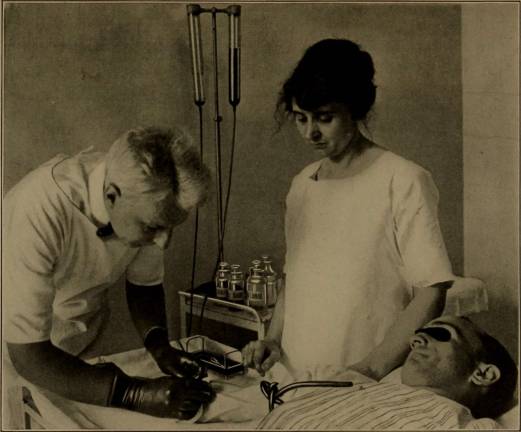Syphilis in the city

by Michelle Cespedes, MD
What did Christopher Columbus, Vincent van Gogh, and Al Capone likely have in common? What is one of the most common preventable causes of miscarriages and stillbirths? What disease can present in so many confusing ways that it has been nicknamed “The Great Pretender” by physicians for centuries? If you answered syphilis, you just may have a hint of what a typical day in my office can be like. From treating sexually transmitted infections (STI) that were once thought to be nearly eradicated to considering diseases that can affect a couple’s fertility desires, the role of the infectious disease specialist continues to evolve.
In 2015, the NYC Department of Mental Health and Hygiene reported that the rates of STIs in New York City were at a 30 year high. Syphilis has seen a dramatic resurgence with the number of cases more than doubling since 2005. From 2015 to 2016, rates of syphilis increased by 27 percent in New York City to nearly 2,000 cases according to the health department.
One of the problems with this resurgence is that many health care providers may not have encountered cases before and may be unfamiliar with the various ways that syphilis can present. Early in infection with syphilis, an open painless ulcer appears at the site where the bacteria enter the body. The ulcer will heal even if not treated, but the person can still be contagious. The ulcer can be as small as a pimple or as large as a cigar burn, but because these lesions do not cause pain, the vast majority goes unrecognized. The open lesion makes it easier to get other sexually transmitted infections such as herpes and HIV. A person is often not aware that they are infected and can unknowingly transmit syphilis to their sex partner. In the secondary stage, a faint rash can appear, occasionally involving the palm of the hands or soles of the feet, which can often go misdiagnosed. While the rash disappears, the disease progresses to the tertiary stage that if left untreated, decades later can lead to arthritis, cardiovascular problems, and neurosyphilis, which affects the nervous system and can cause blindness, deafness, personality changes, and dementia. Congenital syphilis causes birth defects in children born to infected mothers. In 2015 a cluster of more than a dozen cases of ocular syphilis, a rare manifestation of the disease, was identified in Los Angeles, San Francisco, and Seattle.
It’s not just major cities like New York that have seen a resurgence in STIs. In August 2017, the New York Times reported an outbreak of syphilis in Oklahoma City where 199 cases have been identified to date. Another 200 people who had contact with the cases and may be infected are being tracked to be encouraged to get tested and treated. Similar to an unanticipated outbreak of HIV in more than 200 residents of a small town in Indiana in 2015, this syphilis outbreak was mainly among white residents, especially women. These outbreaks are thought to be a direct consequence of the opioid epidemic sweeping the country. As prescription opioid users increasingly turn to IV heroin as a cheaper alternative, behaviors including sex in exchange for drugs or money among small networks of people and shared needles have led to an increased in STIs, including syphilis, HIV, and Hepatitis C. Decreases in funding to local health departments and fewer outreach workers are also contributing factors.
The good news is that unlike the 1800s, our armamentarium to combat these infections has grown tremendously. Syphilis can usually be treated with one to three shots of penicillin. The treatment of HIV has advanced to the point that there are several safe and effective regimens that are taken with a one pill once a day. People who may be at increased risk of getting HIV even have the option of pre-exposure prophylaxis (PrEP), a daily pill that is 95 percent effective at reducing their risk of acquiring HIV. Even Hepatitis C can be cured in nearly 99 percent of patients with a pill taken for as little as eight weeks.
Warm days and beautiful weather in the city means people interacting with one another more and having a good time. That’s also when rates of STI usually increase, keeping infectious disease specialists like myself always busy. Have fun, but practice safe sex. STI testing should be a key component of any sexually active person’s health plan. Protect yourself in advance whenever possible, know your own HIV status and that of your partners, and openly discuss your sex life, drug use, and other health issues with your doctor regularly. Taking ownership and being proactive with your sexual health should be considered an act of self-love.
Dr. Michelle Cespedes is an Associate Professor in the Department of Medicine, Division of Infectious Diseases at Mount Sinai Health System